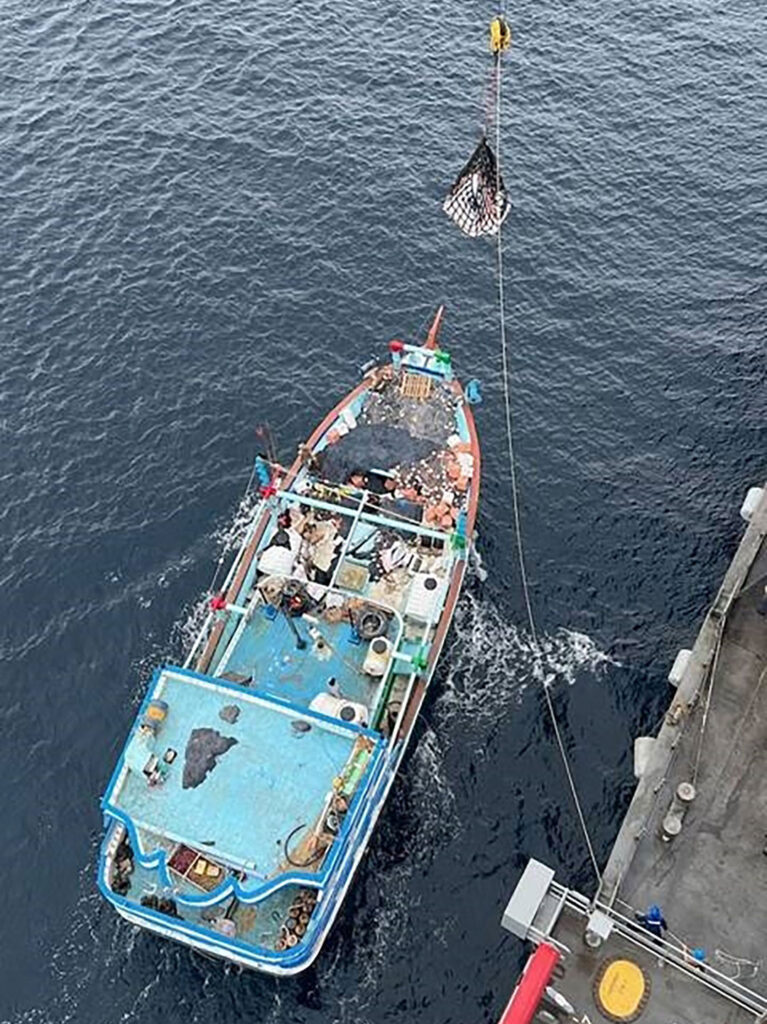Growing ties between Yemen’s Houthi rebels and Somali terror groups threaten to fuel greater insecurity in Somalia and further disrupt shipping in the Gulf of Aden and the Red Sea.
Aries D. Russell of Aries Intelligence said there is “credible evidence” that Iranian and Houthi-linked networks are using Somali ports and smuggling routes to move arms into East Africa and there are indications they also offer consultation and training.
“What we’re seeing is more of an influence and logistical presence, rather than a direct Houthi ground deployment into Africa,” Russell told ADF.
Russell characterized the Houthis, as well as jihadist fighters from Iraq and Syria, as “black market” private military contractors, or PMCs. They are organized, operational entities that offer military-style services such as training, advising and tactical support, although they may be informally structured or loosely governed.
“While these groups are ideological and networked rather than profit-maximizing corporations in the Western sense, they do behave like contractors or subcontractors in a militant ecosystem,” he said. “They differ from conventional mercenaries in their ideological as well as transactional orientation; they do not always fight purely for pay.”
The Iran-backed Houthis supply terror groups with weaponized drones, surface-to-air missiles and other materiel that have been traced to Iranian stockpiles. The weapons are shipped to al-Shabaab, the al-Qaida-affiliated terror group that controls areas in central and southern Somalia, and the Islamic State in Somalia (ISSOM), which primarily operates in Puntland’s mountainous regions.
“Just as in Yemen, the Houthis are using weapons, and especially promises of access to UAVs [unmanned aerial vehicles] and military expertise, as a way of acquiring support from groups in Somalia,” analyst Michael Horton wrote for the Combatting Terrorism Center at West Point. “The Houthis, in cooperation with Iran, are also using the provision of weapons as a way of securing supply chains for their drone and missile programs.”
Analysts warn that expanded supply routes of both Iranian and Chinese ammunition and weaponry could increase the reach of terror groups who could attack targets in Djibouti, Ethiopia and Kenya. According to Horton, the Houthi-Somali arms trade is quite lucrative.
“For example, a crate of Chinese or Iranian-made AK-47s can be sold in Somalia for up to five times what they cost to acquire in Yemen,” he wrote. “Margins for other weapons and materiel such as sniper rifles, RPG-7s, man-portable mortars, and night vision devices are considerably better. Modifiable commercial and military-grade UAVs command even higher premiums.”
Somali and international security forces have tried to stem the flow of arms into the country, but the terror groups have demonstrated the capacity to use high-tech weapons. In January, ISSOM conducted two drone strikes against Puntland security forces, their first known use of the technology, according to the Armed Conflict Location and Event Data Project.
The terrorist group al-Shabaab deployed more drones and reclaimed significant amounts of territory from the Somali government in early 2025. Its network of fighters, loyalists and smugglers across Somalia and northern Kenya offers the Houthis greater opportunities to ship arms out of the Indian Ocean or by land to the Gulf of Aden.
Al-Shabaab also has shared with the Houthis its coastal intelligence network and years of experience in piracy, strengthening the Yemeni group’s ability to threaten regional maritime traffic. An uptick in maritime attacks has bolstered both groups’ finances. According to the Africa Center for Strategic Studies, the Houthis earn an estimated $180 million a month from fees paid by shipping agents to secure safe passage through the region.
The rising insecurity has had direct economic effects on coastal continental countries and global trade. The Africa Center reported that the rerouting of commercial vessels around the Cape of Good Hope in South Africa has increased by 420% and added up to two weeks and 6,000 nautical miles to their journeys. Egypt has seen its nearly $10 billion annual revenues from Suez Canal traffic drop by more than 70%, for a monthly loss of $800 million.
On July 7, the Houthis attacked a Liberian-flagged cargo ship in the Red Sea with drones and rocket-propelled grenades. The assault killed at least four Sailors and left 15 others missing. The rebels released a video that showed explosions on the ship before it sank. The Houthis claimed responsibility for sinking another cargo ship in the Red Sea the day before. These were the first assaults on shipping in the Red Sea since late 2024, possibly indicating a new armed campaign.
Houthi attacks in the Red Sea last year coincided with a resurgence in Somali piracy. As Somalia’s Hiiran Online reported, it is not clear whether the piracy surge reflected opportunism or direct coordination with the Houthis. However, analysts say al-Shabaab last year reached a deal to provide protection to Somali pirates in exchange for 30% of all ransom proceeds and a cut of any loot.
Horton does not expect the relationship between the Houthis and groups in African conflict zones to end any time soon.
“Ongoing wars and insurgencies in Sudan, Ethiopia, and Somalia and the overall febrile nature of politics in the Horn of Africa will provide the Houthis with ample opportunities for expanding their reach,” he wrote.

